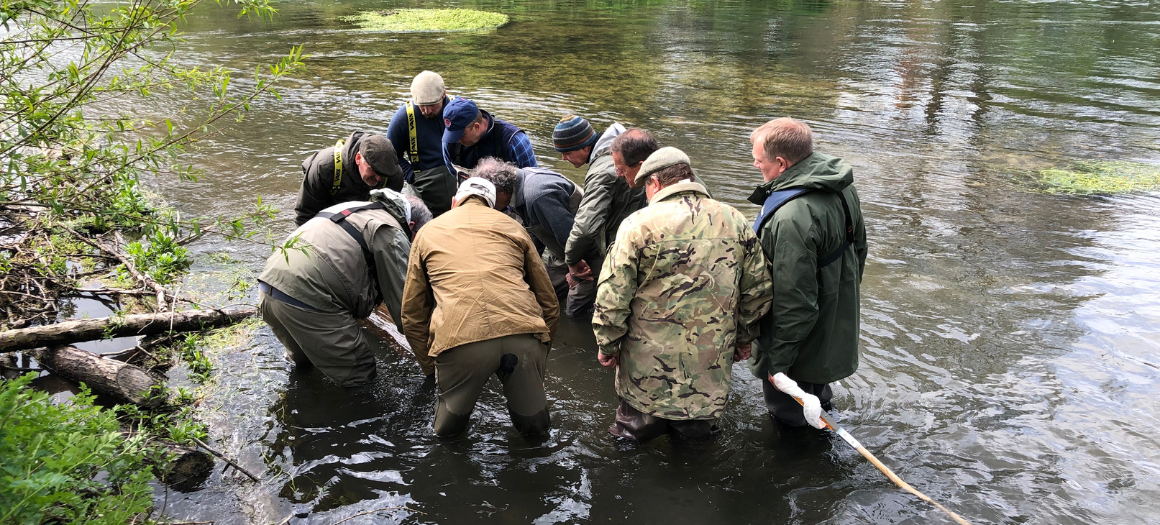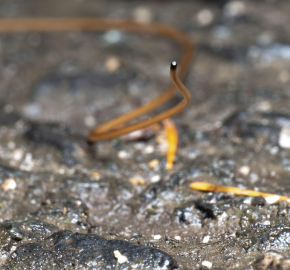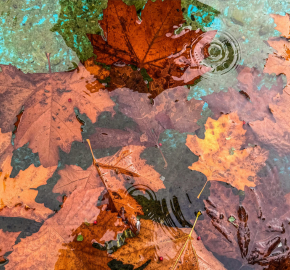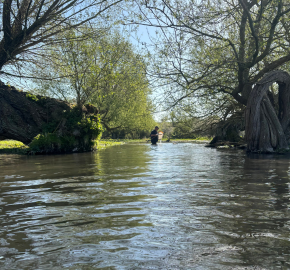A decade of decline: The alarming truth about the river Avon

The River Avon winds through the chalk hills of Wiltshire and Hampshire and is one of England’s ecological jewels. Fed by groundwater from ancient chalk aquifers, this internationally rare chalk stream and Special Area of Conservation supports an abundance of life, including Atlantic salmon, brown trout, aquatic invertebrates and plants.
But beneath the surface, something is badly wrong.
Ten years, one unmistakable trend
In partnership with Wiltshire Fishery Association, we recently published the SmartRivers findings from ten years of invertebrate monitoring on the River Avon, and the results reveal a troubling pattern. From 2015 – 2024, surveys at five key sites on the Avon show significant declines in freshwater invertebrate communities.
Our team of experts have completed a thorough analysis, comparing data from 2015 with 2024, and found that, on average:
- Total species diversity is down by 17%
- Total abundance has declined by 77%
- Riverfly diversity (mayflies, caddisflies, stoneflies) has reduced by 25%
- Riverfly abundance is down by 83%
Freshwater invertebrates are critical indicators of river health. They form vital threads within food webs, perform a range of ecosystem services, and act as invaluable sentinels giving us insights into water quality in the rivers that they call home. Within invertebrate communities, riverflies are particularly sensitive to disturbance and their steep decline signals a river under extreme stress.
SmartRives sampling takes place in the spring and autumn. Some of the invertebrate communities found in both the 2015 and 2024 surveys appear to be particularly impacted.
Spring sampling: Spring is a key season for groups such as mayflies when many species will emerge after over wintering as eggs. The data showed strong average declines for:
- Olive mayflies (Baetis sp.): –95%
- Blue-winged olives (Serratella ignita): –71%
- Green drakes (Ephemera danica): –42%
Autumn sampling: Autumn is an important season for monitoring freshwater shrimp (Gammarus pulex/fossarum), a species that plays a key role in the cycling of organic matter within rivers. On average autumn populations of freshwater shrimp decreased by 85%.
Read the Report
A growing disconnect between policy metrics and reality
Despite these declines, Water Framework Directive (WFD) calculations still rated the Avon’s sites in 2024 as “high” or “good”.
How is that possible?
WFD metrics are based on family-level data and broader reference conditions don’t seem to capture the unique biodiversity of chalk streams. As a result, species can disappear and populations can collapse, yet the river appears “healthy” on paper.
The urgent need for clear and targeted environmental protections
At WildFish, we are calling for the Environment Agency (EA) and Natural England to change how they assess the health of chalk streams and urging them to set more ambitious environmental targets that meet the changing needs of every chalk stream.
The current system is flawed – it overlooks the true scale of declines happening right before us. As a result, we may be sleepwalking toward ecological collapse without any formal warnings. The problem is made worse by reduced monitoring, causing assessments to rely on outdated data that’s often reused from previous assessments.
We’ve been monitoring the Avon for a decade, and the evidence is clear: without robust scientific data, conservation efforts risk becoming little better than guesswork.
Get Involved
What began with just five continuously monitored sites has grown over the last decade into an extensive monitoring network covering the upper Avon and two key tributaries, the Nadder and the Wylye – now totalling an impressive 35 sites, all driven by passionate local activists.
Regulatory monitoring has been weakened by chronic underfunding and inadequate resources. Citizen scientists like our volunteers on the Avon can help to fill this gap.
SmartRivers combines science you can trust with people who care.
Interested in joining us? Email: smartrivers@wildfish.org




